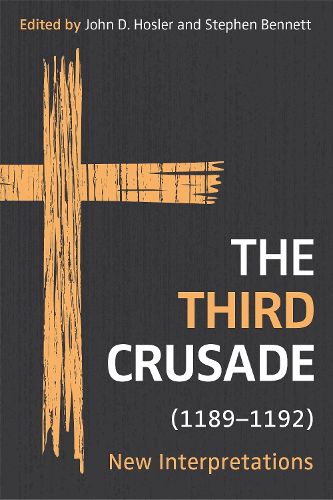Readings Newsletter
Become a Readings Member to make your shopping experience even easier.
Sign in or sign up for free!
You’re not far away from qualifying for FREE standard shipping within Australia
You’ve qualified for FREE standard shipping within Australia
The cart is loading…






Fresh perspectives on one of the largest and most complex crusades ever launched, covering all aspects of the expeditions - from preparation and commencement to results and consequences.
Saladin's victory at the Battle of Hattin in 1187 produced three profound results: a shattered Jerusalem army, a pope falling dead from the news, and the launching of the Third Crusade in response. Under the banners of renowned rulers like Richard the Lionheart, Philip Augustus, and Frederick Barbarossa, men and women from across Latin Christendom took the Cross and joined in the largest western military expedition since Urban II's call to arms in 1095 for the First Crusade.
Long dormant in the renewal of crusade studies in the twenty-first century, the Third Crusade has in recent years begun to attract increased scholarly attention. Adopting a cross-cultural focus that examines both western and eastern societies, this book offers a substantial and timely reappraisal. Chapters shed light on the crusade's causes, context, organization, participants, preparations, commencement, military progress, and short and long-term consequences, and scrutinise well-known sources through new lenses. They also engage with communication theory, the history of emotions, textual criticism and textuality, historiography, archaeology, and topography. Together, they provide both a fresh view of this complex and multifaceted war and a useful survey of its major contours.
$9.00 standard shipping within Australia
FREE standard shipping within Australia for orders over $100.00
Express & International shipping calculated at checkout
Stock availability can be subject to change without notice. We recommend calling the shop or contacting our online team to check availability of low stock items. Please see our Shopping Online page for more details.
Fresh perspectives on one of the largest and most complex crusades ever launched, covering all aspects of the expeditions - from preparation and commencement to results and consequences.
Saladin's victory at the Battle of Hattin in 1187 produced three profound results: a shattered Jerusalem army, a pope falling dead from the news, and the launching of the Third Crusade in response. Under the banners of renowned rulers like Richard the Lionheart, Philip Augustus, and Frederick Barbarossa, men and women from across Latin Christendom took the Cross and joined in the largest western military expedition since Urban II's call to arms in 1095 for the First Crusade.
Long dormant in the renewal of crusade studies in the twenty-first century, the Third Crusade has in recent years begun to attract increased scholarly attention. Adopting a cross-cultural focus that examines both western and eastern societies, this book offers a substantial and timely reappraisal. Chapters shed light on the crusade's causes, context, organization, participants, preparations, commencement, military progress, and short and long-term consequences, and scrutinise well-known sources through new lenses. They also engage with communication theory, the history of emotions, textual criticism and textuality, historiography, archaeology, and topography. Together, they provide both a fresh view of this complex and multifaceted war and a useful survey of its major contours.